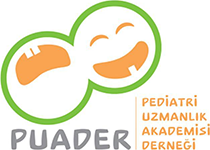Traumatic atlantoaxial dislocation with a type III odontoid fracture: a rare and fatal injury
Maarten Vanloon1 , Mark Plazier2,3,4
, Mark Plazier2,3,4 , Sven Bamps2,3,4
, Sven Bamps2,3,4
1Faculty of Health, Medicine and Life Sciences, University Maastricht, The Netherlands
2Department of Neurosurgery, Jessa Hospital Hasselt, Belgium
3Faculty of Medicine and Life Sciences, University Hasselt, Belgium
4Study and Educational Center for Neurosurgery, Virga Jesse, Hasselt, Belgium
Keywords: atlantoaxial dislocation, odontoid fracture, cervical trauma
Abstract
Traumatic atlantoaxial dislocation with a dens fracture is very rare in children. In this case report, a 15-year-old woman presented at the emergency department after being hit by a motor vehicle as a bicyclist. CT scans showed a type III dens fracture with retropulsion of the posterior wall, resulting in significant stenosis of the spinal canal. A cervical transection and prevertebral hematoma were present. External immobilization can be applied conservatively. However, atlantoaxial dislocation may require surgical fixation to stabilize and prevent slippage. Here, posterior screw-rod fixation techniques can provide better results in terms of neurological outcomes, pain status and adverse events compared to other techniques. However, head and neck imaging should be performed to consider surgical intervention.
Cite this article as: Vanloon M, Plazier M, Bamps S. Traumatic atlantoaxial dislocation with a type III odontoid fracture: a rare and fatal injury. Pediatr Acad Case Rep. 2023;2(3):74-7.
The parents’ of this patient consent was obtained for this study.
The authors declared no conflicts of interest with respect to authorship and/or publication of the article.
The authors received no financial support for the research and/or publication of this article.

